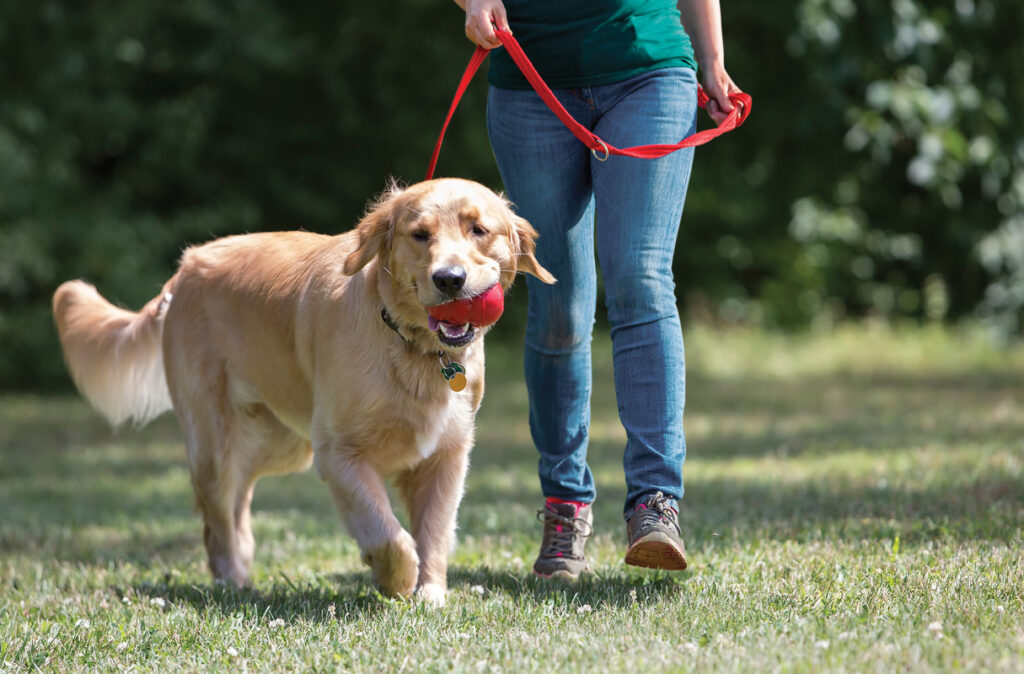Receiving a diagnosis that impacts your dog’s health is never an easy conversation. After getting over the initial shock, there are an abundance of questions that most pet parents are bound to have.
Remember that your dog’s vet is used to these questions, they are prepared to answer them thoroughly and fully, and no question is off the table. After all, they have almost certainly heard stranger questions before.
This conversation can be a difficult one regardless of the diagnosis and long-term management, but in the case of Cushing’s Disease, there is good news.
Cushing’s Disease/Cushing’s Syndrome can be treated effectively. While it will necessitate a slight change in both your and your dog’s lifestyles, there are still many happy years together to be had.
What Is Cushing’s Disease?
Cushing’s Disease, also known as hyperadrenocorticism, occurs when too much of the stress hormone (called cortisol) is released into the body. This happens because a dog’s adrenal glands are overactive, and are producing excess cortisol.
What Is Cortisol and Why Is It Important?
Cortisol is a hormone present in both dogs and humans, and it serves many deeply important functions in each. As a stress hormone, cortisol helps to regulate feelings of stress and perceived danger in the body. This hormone also aids in regulating a dog’s metabolism, blood sugar, blood pressure, immune system, and combats inflammation.
What Are the Different Types of Cushing’s Disease That a Dog Can Experience?
There are several different types of Cushing’s Disease that your dog can experience, and each of them will lead to a slightly different treatment plan to ensure the best possible results.
These three kinds each originate from different sources, but they have the same general end result. As such, they are all still characterized as Cushing’s Disease and require a treatment plan created by you and your dog’s veterinarian.
Cushing’s Disease Caused by a Pituitary Gland Tumor
Pituitary Dependent Cushing’s Disease is by far the most common form that dogs experience. Between 80% and 85% of dogs will have this type of Cushing’s. The pituitary gland is a small, pea-sized gland that sits near the base of the brain. This pituitary tumor disrupts the natural processes that allow the pituitary gland to perform its normal functions.
The word “tumor” can be a scary one, but in this case, they are generally benign (non-cancerous). The main problem that they cause is the disruption of typical cortisol production.
In healthy dogs, the pituitary gland registers how much cortisol is currently found in the blood. If there is not enough, then the gland will communicate that more cortisol has to be produced.
From there, the adrenal glands will produce more cortisol. If the pituitary gland’s gauge of cortisol levels in the bloodstream is off, it can lead to overproduction of the hormone, leading to Cushing’s Disease.
This type is typically operated on in humans to remove the tumor, but this is not common practice in dogs. This canine form is generally treated with medications.
Cushing’s Disease Caused by an Adrenal Gland Tumor
The second form of Cushing’s Disease is less common than the pituitary-dependent kind. Still, it’s a possibility that both you and your dog’s vet should be aware of. The adrenal glands are located atop a dog’s kidneys, and there are two of them.
In this scenario, rather than the overproduction of cortisol being a direct result of faulty messaging from the pituitary gland, the adrenal glands are directly the cause. Remember that adrenal function tests might produce false positives.
If an adrenal tumor is the cause of your dog’s Cushing’s Disease, then surgery to remove it may be an option, or medication could still be the best route. Be sure to discuss this with your vet to determine the most effective treatment plan.
Iatrogenic Cushing’s Disease
Iatrogenic Cushing’s Disease often occurs in smaller toy breeds, but that is not always the case. This type is triggered by prolonged steroid use in your dog (a steroid likely meant to treat another condition).
The way to treat Iatrogenic Cushing’s Disease is by tapering off and eliminating the original steroid. Unfortunately, this may cause symptoms of whatever the steroid was treating to return.
What Are the Symptoms of Cushing’s Disease in Dogs?
The symptoms of Cushing’s Disease are caused by the overproduction of cortisol. Since cortisol has so many different, integral uses within the body, these symptoms can cover a variety of areas.
Your dog’s symptoms may include:
- Hair loss
- Skin thinning
- A swollen abdomen or stomach, creating a “pot belly appearance”
- Increased thirst
- Increased urination
- Elevated appetite
- Is often tired or shows signs of lethargy
- Muscle weakness
- Prone to skin infections
- Panting more than usual
A dog with Cushing’s Disease may display one or several of these symptoms, but it is always important as pet parents to be on the lookout for changes or adjustments in their usual routines and behaviors.
Note that bladder stones, gastrointestinal diseases, and chronic inflammatory liver disease can present with similar clinical signs.
How Is a Dog Diagnosed With Cushing’s Disease?
If a dog is suspected of having Cushing’s Disease, some of the most common means of reaching a diagnosis are through blood tests, a full chemistry panel, and a urine culture.
Having a dog’s blood work done as well as performing a urinalysis can be very enlightening regarding the next steps, but often more tests are required, in addition to the physical exam. If a tumor of the adrenal gland is suspected, an ultrasound will likely be performed to confirm or deny that possibility.
A urine cortisol/creatinine ratio test is also commonly given. If this ratio is found to be within normal limits, it is likely that a dog does not have Cushing’s.
An ACTH stimulation test may also be performed. ACTH is how the pituitary gland communicates the need for more cortisol to the adrenal glands, so manually administering ACTH can be very helpful to see how your dog’s body reacts. Keep in mind that it is possible that this test can lead to false negatives.
Your dog’s vet will suggest what tests they think would be the most useful in finding a diagnosis, but it is entirely likely that more than one test will be recommended. This increases confidence in the diagnosis and can make the treatment path that much clearer.
Which Dogs Are More Likely To Get Cushing’s Disease?
Cushing’s Disease can be naturally occurring (such as when it is pituitary-dependent and adrenal dependent), or it can be the result of outside factors (Iatrogenic Cushing’s Disease).
It is more common for naturally occurring varieties of the disease to afflict middle-aged to senior dogs, generally being noticed in those aged six and above. Hyperadrenocorticism is also somewhat more common in female dogs, especially those who have been neutered.
What Can Happen if Cushing’s Disease Is Left Untreated?
It is important to form and stick to a treatment plan when it comes to Cushing’s Disease, or else there can be lasting side effects.
If the symptoms are ignored, then these dogs can become more likely to develop issues such as diabetes, lasting kidney damage, high blood pressure, and blood clots.
How To Treat Cushing’s Disease in Dogs
Cushing’s Disease is typically treated through medication, but it is possible that surgery could be involved as well. This will depend on your dog and the kind of Cushing’s that they are diagnosed with by their vet.
These medications are meant to reduce the level of cortisol that your dog’s body produces, helping to alleviate their symptoms over time.
If your dog has Cushing’s Disease caused by prolonged exposure to steroids, then your vet may consider reducing the dose or switching to an alternative medication. Steroids should never be stopped suddenly without consulting your vet as this could cause severe side effects.
These cases can become a bit more complicated as whatever that dose of steroids was initially treating is likely to come back. No matter the type of Cushing’s, access to a vet and routine monitoring of blood tests is crucial.
Speak With a Veterinarian, Often
At the beginning of you and your dog’s journey with Cushing’s Disease, it is likely that there will be frequent trips to the vet along with many inevitable questions that need answers.
This is all par for the course and to be expected in the process of reaching a diagnosis. Even after a treatment plan has been established, it is important to stay in contact with a veterinarian. This ensures that your dog’s condition continues improving and nothing has to be changed.
For any and all of your Cushing’s-related questions, the team of vets from AskVet in the KONG Club app has the answers. With AskVet, not only will you have access to a community of like-minded pet parents, but you can also get in contact with a licensed vet at any time of the day or night.
Questions do not only come up during normal business hours, so having a trusted source to turn to as questions come up can be huge, especially when coming to terms with a diagnosis.
Treatment Is Possible
With a treatment plan crafted by you and your vet, the prognosis for a dog with Cushing’s Disease is an optimistic one. Their symptoms can be managed well, leading to a comfortable and happy existence for both you and your dog. Following your vet’s medical advice is key in treating everything from severe illness to lifestyle habits.
Sources:



